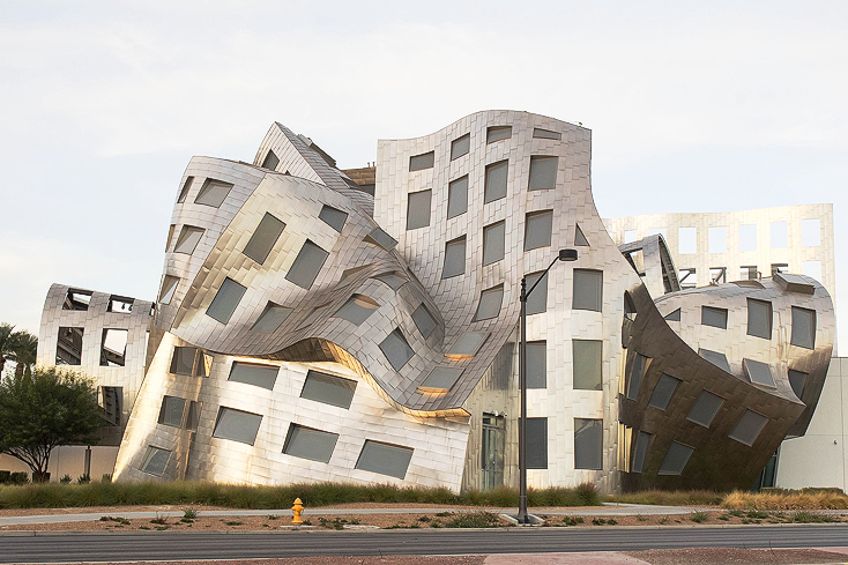Famous Architects – A Guide to Celebrated Architectural Designers
Despite the fact that architectural designers are not accorded the same level of regard, prominence, and worldwide fame as sculptors or painters, the creativity and originality of the architecture designer are the most constructive and useful to the growth and evolution of a civilization. Modern architecture is one of the most forward-thinking disciplines due to the constant breakthroughs and innovative advances that have developed and significantly improved comfort conditions and lifestyles. Famous architects not only construct aesthetically rich and highly innovative contemporary architecture known for their grandeur, but their primary responsibility is more critical, which is to deliver optimal standards of reliability, safety, and efficiency.
Famous Architects
Contemporary Architecture pervades our daily lives with its constant presence wherever we look, bringing with it a plethora of unique and practical advantages. Famous architecture is, without a doubt, the most important connection that informs us of our past. Lineages and cultures that flourished centuries ago are appreciated for these culturally rich and famous architectural buildings.
Both ancient and modern architecture has helped to shape and define our lives in a more practical and sustainable way.
In this article, we shall explore the famous architects throughout history who created some of the best architecture in the world. While our list is certainly not exhaustive, it covers 15 of the most well-known and celebrated architects in the world.
Christopher Wren (1632 – 1723)
| Nationality | English |
| Date of Birth | 20 October 1632 |
| Date of Death | 25 February 1723 |
| Place of Birth | East Knoyle, UK |
Christopher Wren was a bright young man who excelled in school. He was very enthusiastic about science and mathematics, and by the age of 17, he had invented numerous devices. Wren had a reputation as a great scientist at Oxford University.
He conducted a series of tests that would become crucial in the field of health care.
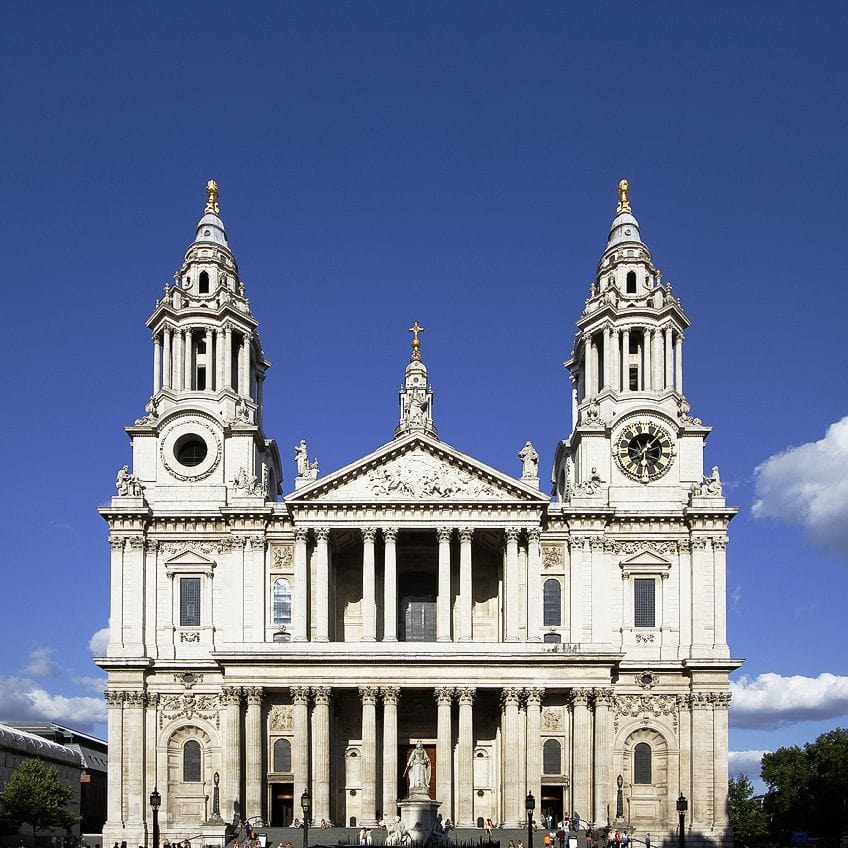
Wren read a book called On Architecture (1st century AD) by a Roman architect named Vitruvius as a student. Wren acquired a desire to create famous architectural buildings akin to those erected by the Romans after researching the book.
Wren toured Rome in 1663 and was especially taken with the Theater of Marcellus. Despite the fact that the theater was in ruin, Wren was able to review sketches that depicted what it would have looked like when it was initially erected.
When the architectural designer was later requested to construct a new theater in Oxford, he opted to employ the knowledge he obtained while examining the theater in Rome.
The Great Fire of London devastated a major portion of the city on the 2nd of September, 1666. Charles II needed to choose someone to oversee the restoration of London. The Great Fire presented Wren with unforeseen opportunities, and he was soon busy working on rebuilding. Though plans for a massive restoration of the city proved impractical, Wren was named surveyor of royal projects in 1669, putting him in command of governmental infrastructure operations.
Antoni Gaudí (1852 – 1926)
| Nationality | Spanish |
| Date of Birth | 25 June 1852 |
| Date of Death | 10 June 1926 |
| Place of Birth | Baix Camp, Spain |
Gaudí’s style was a decorative blend of Gothic, Baroque, Victorian, and Moorish components that frequently highlighted decorative tile-work and drew on natural forms – an impact that can be seen in the tree-like pillars that support the enormous interior of his church, and the rippling facade of yet another of his famous architectural buildings, the Casa Milla.
The Spanish architecture designer established his unique style, motivated by his relationship with God and respect for nature. Gaudí was a devout follower of Catholicism who thought that by drawing influence from God’s creation, he would be showing praise towards God.
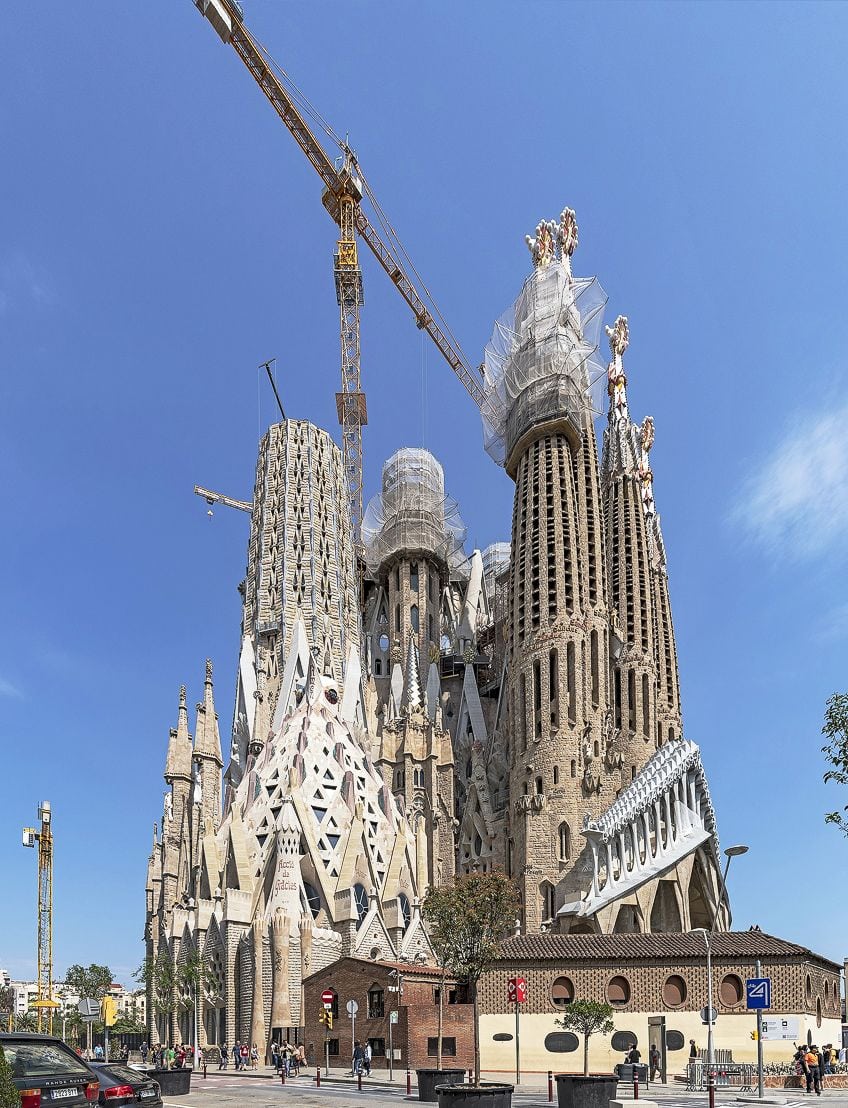
Gaudí began his career in the aesthetic spirit of his Victorian forefathers, but he quickly established his personal flair, constructing his creations with compositions of geometrical proportions and enlivening the surface with textured stone or brick, colorful tiles, and floral or serpentine metalwork. The architectural designer and his creations were quickly associated with the city of Barcelona.
Nevertheless, the architectural industry supported the International Style throughout the 1920s and 1930s, which was diametrically opposed to Gaudí’s principles. As a result, it would not be until the 1960s that Gaudí gained widespread renown.
Louis Henry Sullivan (1856 – 1924)
| Nationality | American |
| Date of Birth | 3 September 1856 |
| Date of Death | 14 April 1924 |
| Place of Birth | Boston, the United States |
Known for his “form follows function” concept, Louis Henry Sullivan was eager to break free from convention and became instrumental in developing a uniquely American architecture. Sullivan, like Sir Christopher Wren, benefitted from a big fire. The Great Chicago Fire of 1871 sparked a development surge that provided famous American architects like Sullivan with employment for many years to follow.
In his early years, he worked for the famous American architects William le Baron Jenney and Frank Furness.

In 1881, when he was just 24 years of age he was appointed a partner in Dankmar Adler’s company. The skyscraper was conceived when other architects, such as Jenney, began to use steel to enable higher constructions. Rather than following outdated conventions, Sullivan was essential in developing a fresh practical design for these towering examples of modern architecture. Sullivan’s creations also used geometric forms as well as organic components.
Sullivan became a prominent champion for the establishment of distinctly American architectural designs through his explorations of organic embellishment and steel construction.
He utilized natural decoration to represent a civil system. A structure, according to Sullivan, should adapt to its surroundings in the same way that a plant would develop “naturally, rationally, and artistically out of all its circumstances.”
Frank Lloyd Wright (1867 – 1959)
| Nationality | American |
| Date of Birth | 8 June 1867 |
| Date of Death | 9 April 1959 |
| Place of Birth | Wisconsin, US |
Many consider Wright to be among the most famous architects of the contemporary age. Wright, together with his early tutor Louis Henri Sullivan, contributed to the development of distinctly American architecture.
Wright was a fan of the Prairie School of design, which originated in the Midwest and stressed horizontal lines to fit with the environment.
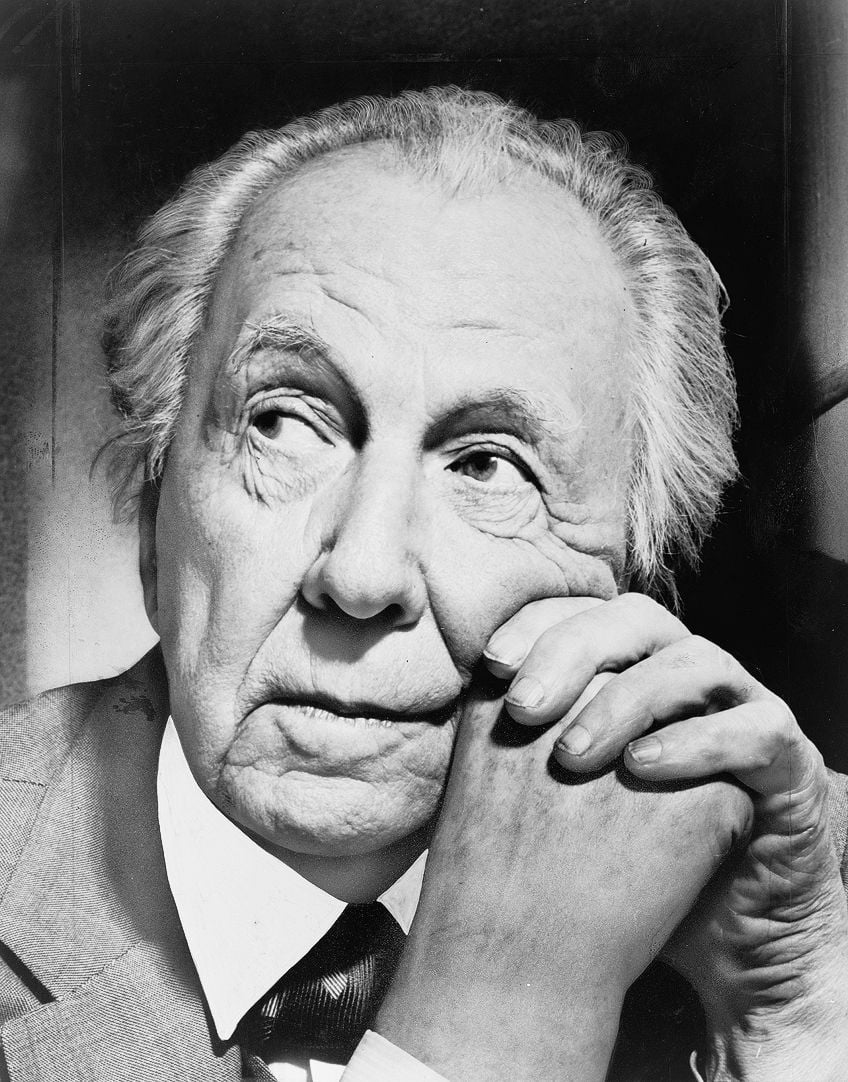
There is a well-known instance of his Prairie-style home, erected in Chicago in 1910. Wright, on the other hand, took this concept a step further and advocated for what he termed organic architecture. The use of methods and materials to combine concepts with the environment and the natural landscape was important to his work. Wright became caught in a scandal in 1909 after abandoning his wife and children for his lover. However, his career revived and he went on to develop several of his distinctive masterpieces. He created a residence constructed above a waterfall in southern Pennsylvania in 1935.
He was also credited for the groundbreaking architecture of New York City’s Guggenheim Museum, which incorporates a rising spiral corridor rather than discrete levels. Wright was a prominent figure in the 20th-century architectural developments, inspiring architects all around the world with his projects and hundreds of students.
His Prairie houses have thematic, coordinated features, many of which are based on plant shapes and are replicated in carpets, windows, and other furnishings. Wright completely incorporated glass in his creations, finding that it matched well with his organic building concept. According to Wright’s organic philosophy, all architectural components should seem cohesive, as though they belonged together.
Nothing should be tied to it until the whole effect is considered. Wright frequently employed wide expanses of glass to erase the boundaries between the inside and outside to unite the building to its setting.
Ludwig Mies van der Rohe (1886 – 1969)
| Nationality | Spanish |
| Date of Birth | 25 June 1852 |
| Date of Death | 10 June 1926 |
| Place of Birth | Baix Camp, Spain |
During the early 1920s, Mies had a role in the development of the International Style as the primary trend of contemporary architecture. Unlike other early supporters of the International Style, who drifted away from it in the 1960s, he stayed entirely loyal to the movement for the next 40 years of his career.
Mies first referred to his ideas for skyscrapers and horizontally inclined residences’ ‘skin-and-bones” design owing to its use of minimum materials, specificity of space, sturdiness of construction, and openness. His design encourages the blurring of the lines between inner and outdoor, as well as the rejection of the sensation of being entirely confined.
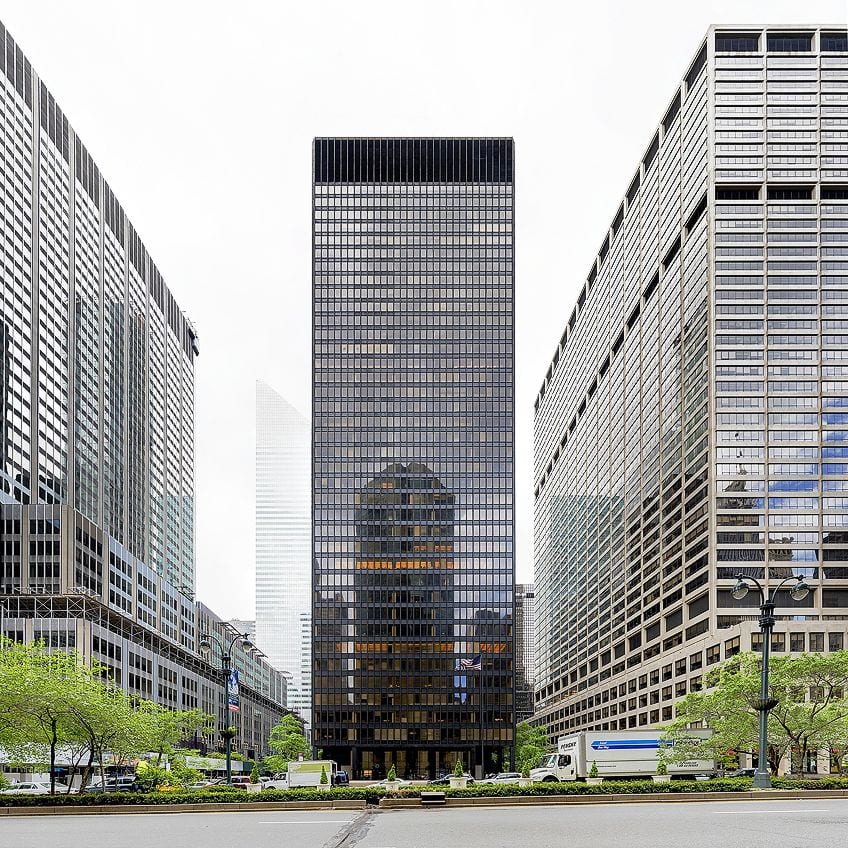
Mies’ structures frequently stress their inherent uniqueness in relation to their environment, placing themselves – and, via their visibility, their people – on display. Several of them, like the Barcelona Pavilion, are perfect for public gatherings, while others, such as the Farnsworth House, are famously difficult to occupy when seclusion is required. Mies, who grew up near his father’s stone-cutting company, was particularly attuned to the resources he used in his creations, which included chrome, fine stone, bronze, and even brick.
Many of his constructions, particularly the Seagram Building, and Tugendhat House were highly costly to create and are notable for their superb craftsmanship as well as their industrial techniques of assembly.
Le Corbusier (1887 – 1965)
| Nationality | Swiss-French |
| Date of Birth | 6 October 1887 |
| Date of Death | 27 August 1965 |
| Place of Birth | La Chaux-de-Fonds, Switzerland |
Few architecture designers can compete with the prestige of Le Corbusier. This highly controversial designer rose from complete obscurity in the Jura Mountains to become one of the 20th century’s most important architectural designers.
During the interwar years, he was one of the primary architectural designers who developed the concepts for really avant-garde contemporary architecture.
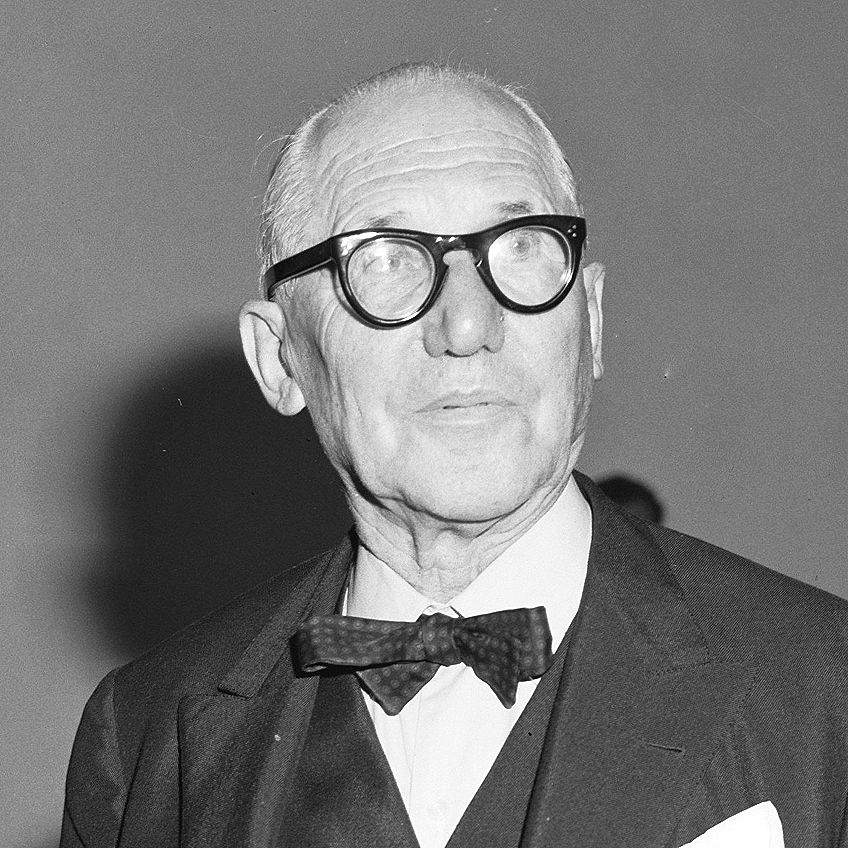
Le Corbusier’s concepts about massive, restructured, zoned, and commercially constructed metropolises both astonished and enticed a worldwide audience, and while they never materialized as a coherent plan, many of his followers put many of his ideas into practice around the world.
Over 50 years after his passing, Le Corbusier’s concepts and structures continue to exert influence and generate hostility. His complicated connections to the political and sociological elements of architecture, as well as his extensive documents and archives, ensure that he will be the topic of arguments for ages to come.
Highly lauded as an innovator whose creative designs for urbanized areas and environments significantly converted our comprehension of what a town could and should look like, he is also scorned for the characterless tedium that his branch of modernist architecture promoted, as well as the destruction of the urban core that he both advocated and urged among his urban planning supporters in the latter half of the last century.
Philip Johnson (1906 – 2005)
| Nationality | American |
| Date of Birth | 8 July 1906 |
| Date of Death | 25 January 2005 |
| Place of Birth | Cleveland, Ohio |
“All architecture is a sanctuary, and the best architecture in the world is the creation of space that holds, hugs, glorifies, or inspires the people who inhabit it.” Even nowadays, designer Philip Johnson’s statements resonate with truth.
Johnson pursued philosophy and history at Harvard before becoming renowned for his modernist and postmodernist contemporary architecture such as the Seagram Building and the Glass House.

His earlier works show respect to this basic and minimalistic aesthetic since he was an early supporter of the Modernist trend. The renowned glass and bronze tower in New York City, the Seagram Building, was a synthesis of Mies and Johnson’s modernist ideals and beliefs. Constructed in 1956, Philip Johnson was tasked to design the building’s interiors in collaboration with his lifelong friend and mentor.
His art was genuinely about the unseen – what was concealed behind the bronze and glass, as well as in the pillars, beams, and flooring. His works are often characterized as “theatricality of display” because of the visual precision and aesthetic lucidity his constructions provided to the observer.
He was able to have an impact on the American urban fabric, and his influence is still seen today. Unlike many other famous American architects, he transitioned from one style to another. Philip Johnson’s works exhibited his design sense in a variety of contexts, ranging from ‘pure’ modernist sensibilities and principles through neoclassicism and postmodernism philosophy.
Eero Saarinen (1910 – 1961)
| Nationality | Finnish-American |
| Date of Birth | 20 August 1910 |
| Date of Death | 1 September 1961 |
| Place of Birth | Kirkkonummi, Finland |
Saarinen’s early recognition of his enthusiasm for building and design led to the development of his own, sometimes sculptural, style and a daring attitude. In a relatively brief professional life, Saarinen’s inventive courage resulted in an exceptional set of extremely futuristic building structures of nearly every form.
Their remarkable prominence and pioneering designs indicate that they still appear to be advanced and have remained largely unmodified more than 50 years later.

Saarinen’s famous architecture, such as the TWA terminal and the St. Louis Gateway Arch, are frequently extraordinarily sculptural – a characteristic probably inherited from both his mother’s influences and his own modest schooling in sculpting – and architecturally daring, confounding our preconceptions of how things must stand.
They also make full use of the capabilities of contemporary resources, notably concrete, and engineering expertise. Though theoretically an International Style architecture designer whose mature time overlaps with the movement’s zenith, Saarinen’s creativity comes in his concentration on creating innovative approaches to every particular contract. Saarinen’s famous architecture tends to connect with common motifs in human experiences, suggesting unexpected associations between buildings and settings that, with a deeper examination, integrate well with their functions.
Saarinen’s excellent understanding of culture and history aided him in understanding the framework in which his structures would be placed, and the strong links that they create with their environment explain why virtually all of his significant structures have remained nearly unmodified to the current day.
Frank Gehry (1929 – Present)
| Nationality | Canadian-American |
| Date of Birth | 28 February 1929 |
| Date of Death | N/A |
| Place of Birth | Toronto, Canada |
In response to the frigid and sometimes formulaic Modernist structures that studded many cityscapes, Gehry, like so many of his peers, started experimenting with unconventional expressive approaches and seeking for a distinctive language.
In his initial studies, he created quirky, one-of-a-kind buildings that stressed a sense of scale and environmental coherence.

These efforts are arguably best exemplified by the “refurbishments” he did to his own Santa Monica, California, house. Gehry basically pared down the two-story house to its structure and then erected a corrugated-steel frame and chain link around it, replete with asymmetrical glass and steel rod appendages. He created the illusion that the conventional bungalow – and the stylistic rules it represented – had blasted wide open.
Throughout the 1980s and 1990s, he was greeted with commissions all around the world for approaching each new assignment as a sculptural piece, a physical container, and a place with air and light. These works had the dismantled character of his Santa Monica residence, but they also began to exhibit a clean grandeur that fit his more public endeavors. By that point, his signature design had evolved into buildings that resembled flowing free-form sculpture.
As the 21st century developed, he continued to obtain large-scale mandates. While critical opinions on his unconventional constructions are sometimes varied, Gehry’s architecture made architectural design popular and spoken about in a way not experienced in the U. S. since Frank Lloyd Wright.
Richard Rogers (1933 – 2021)
| Nationality | Italian-English |
| Date of Birth | 23 July 1933 |
| Date of Death | 18 December 2021 |
| Place of Birth | Florence, Italy |
Rogers did not flourish academically as a youngster, which led him to assume he was unintelligent since he couldn’t read or memorize his work, and as a result, he said, he grew very despondent. Rogers didn’t learn to read until he was 11 years old, and it was only as an adult that he realized he was dyslexic. After graduating from high school, he pursued a foundation program at Epsom School of Art before completing military duty for a couple of years.
Rogers met architectural scholar Norman Foster and planning scholar Su Brumwell at Yale. When he returned to England in 1963, he formed Team 4 with Brumwell and Foster.

Foster and Rogers established a name for what was eventually dubbed “high-tech design” by the press. In 1977, when the Pompidou Center was initially launched, it was regarded as the pinnacle of a style known at the time as Structural Expressionism.
Rogers was a strong supporter of the form. This building, built as Paris’ primary institute for contemporary art, resembles a building turned inside out, with its heat and drainage infrastructure displayed as the facade. It also includes a glass external escalator scaling the structure’s height.
Rogers used the same strategy for another of his examples of famous architecture, the Lloyd’s of London headquarters.
Norman Foster (1935 – Present)
| Nationality | English |
| Date of Birth | 1 June 1935 |
| Date of Death | N/A |
| Place of Birth | Reddish, UK |
Norman Foster is a British-born architecture designer who is widely regarded as one of the world’s greatest and most famous architects. Foster is known as the “king of high-tech” for his extremely modern architecture and sleek, streamlined famous architectural buildings.
He founded his firm in 1967 and has subsequently completed a diverse range of projects during the past 40 years, collecting approximately 500 honors and distinctions for excellence.

Foster is recognized for being self-motivated and enthusiastic behind the praises and accomplishments. He competes in marathons and tough cross-country competitions. It’s remarkable to observe that, even in his 90s, the architect likes swimming, riding, and rowing. His greatest length of time is accessible for design, which is his primary activity, but aside from that, the architecture designer spends time with his family – traveling extensively rather than being confined by day-to-day duties.
Foster received a Fellowship at Yale School of Architecture after graduating in 1961, where he learned under Paul Rudolph. Rudolph had an enormous influence on Foster, inspiring him to continue for almost 40 years.
Foster was trained to sketch like an architectural designer by Rudolph, who had seen Foster’s talent and encouraged him harder than his peers.
Renzo Piano (1937 – Present)
| Nationality | Italian |
| Date of Birth | 14 September 1937 |
| Date of Death | N/A |
| Place of Birth | Pegli, Italy |
Renzo Piano is not known for possessing a distinct aesthetic. Rather, his designs have been diverse, varying from the Neo-Brutalism of his styling for the Whitney Museum to the graceful, sun-filled Menil Collection in Texas, which replicates an oversized rendition of a mid-century residence by Richard Neutra.
His ideas, however, frequently have an industrial or technical aesthetic.

The Shard, a steeply tapering 95-story skyscraper constructed of metal and glass that became his best-renowned work, is his tallest project to date. Renzo Piano also oversaw a significant redevelopment initiative for Genoa’s historic port, transforming it from a derelict industrial district into a cultural hub and tourist magnet.
He extended roads to provide full access to the harbor, converted waterfront structures into commercial and cultural buildings, added an aquarium, a library, and a botanical garden. Furthermore, he built the new Renzo Piano Building Workshop offices on a series of terraced platforms overhanging the Mediterranean. An eight-person monorail vehicle glides up and down the mountain to reach the edifice.
Dame Zaha Hadid (1950 – 2016)
| Nationality | Iraqi |
| Date of Birth | 31 October 1950 |
| Date of Death | 31 March 2016 |
| Place of Birth | Baghdad, Iraq |
Zaha Hadid, known for infusing designs with unexpected forms that challenge physics, studied mathematics before receiving the Diploma Prize in 1977 from the London-based Architectural Association. She was raised in Baghdad in 1950, amid an era of wealth and development in Iraq, and decided she wanted to be an architect by the age of 11.
Hadid challenged preconceived beliefs about what might be accomplished in the field of architecture. Her extraordinarily imaginative designs dubbed the “Queen of the Curve,” emancipated architecture from its usual approach of concrete and steel and presented radical new ways to conceive rooms in harmony with their environment.
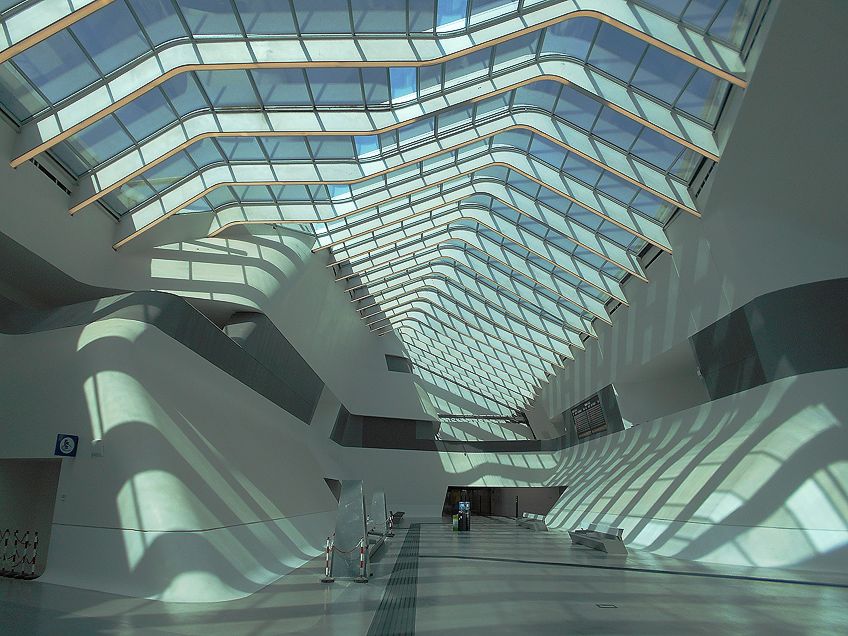
With a background in painting and the use of cutting-edge digital technology, Hadid’s inventiveness was unconstrained by conventional typologies, and her unique approach helped move architectural geometry forward towards a revolutionary new style. Hadid’s architectural sketches and paintings gained her international renown long before she ever saw one of her plans materialize as a concrete structure.
She had already been challenging the assumption that a structure was only a large mass, devoting close attention to the interactions between its constituent pieces, via extremely inventive and complicated abstractions.
Even though not affiliated with any single school, most of her work has been associated with Deconstructivism due to its sculptural use of design as a receptacle for interconnective areas, striking unorthodox angles, and forms bursting with numerous small elements. Her actual constructions echoed her earlier artworks in this way.
Santiago Calatrava (1951 – Present)
| Nationality | Spanish |
| Date of Birth | 28 July 1951 |
| Date of Death | N/A |
| Place of Birth | Benimàmet, Spain |
This Spanish architect’s work has been labeled as Neofuturist, however sci-fi baroque may be a more accurate description. His structures frequently imitate the rib cages of prehistoric robotic dinosaurs, assuming such creatures existed.
His initiatives drew international focus and a penchant for enormous budget overruns.
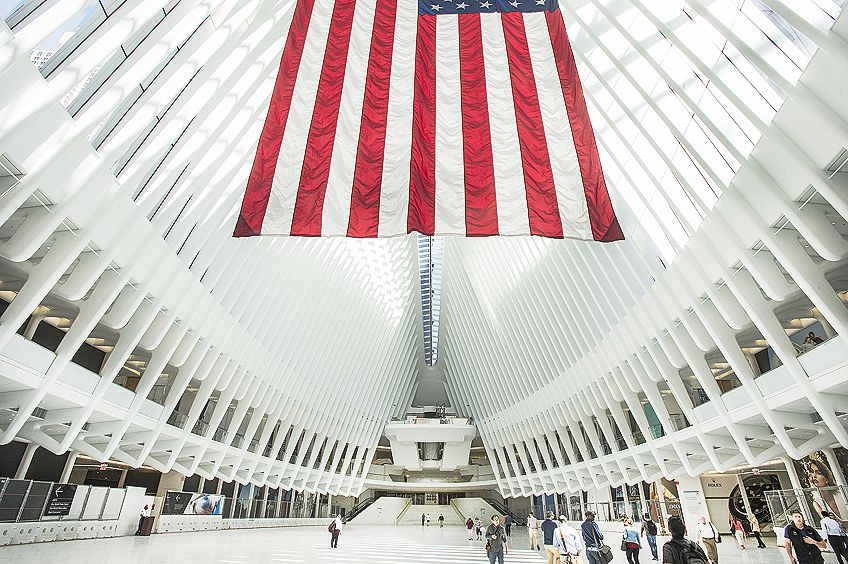
Nevertheless, there’s no doubt that Calatrava is one of the most unique designers working today, as seen by his most well-known masterpiece, the World Trade Center Transit Hub. The Transit Hub is a spectacle in white, its inside is highlighted by a glass oculus enabling sunshine to penetrate into its main hall, now open after years of setbacks and ballooning expenses.
Calatrava also has another structure on the World Trade Center; a Greek Orthodox church that replaced one that was damaged in the 9/11 attacks.
It, too, is adorned in white, and its design is inspired by Istanbul’s iconic Hagia Sofia. Calatrava built a succession of spectacular bridges, the sort of structure that first drew him international prominence, for towns throughout the world looking for an emblem of modernism and courage.
Jeanne Gang (1964 – Present)
| Nationality | American |
| Date of Birth | 19 March 1964 |
| Date of Death | N/A |
| Place of Birth | Belvidere, United States |
Jeanne Gang, an American architect, is well-known for her creative approaches to ecological and environmental sustainability concerns. She used environmentally sustainable practices such as recyclable materials to preserve resources, reduce urban expansion, and boost biodiversity.
She is likely best recognized for her Aqua Tower, a skyscraper in downtown Chicago that, when finished in 2010, was among the world’s highest structures created by a female architect.
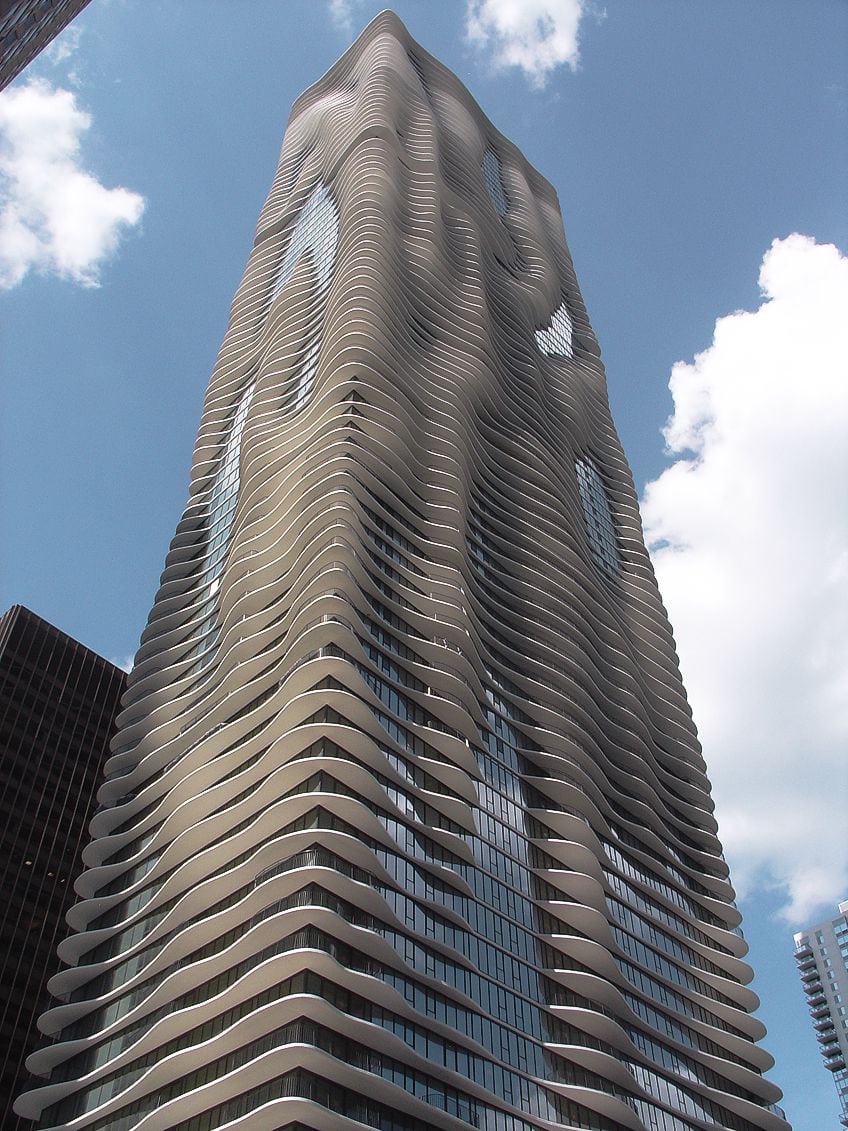
The curved concrete veranda overhangs, undoubtedly the structure’s most remarkable characteristic, were created to fulfill a dual function: they add an interesting visual aspect to Aqua by evoking undulating water, and they dissipate heavy winds, enabling balconies to be positioned on every floor as well as along all four sides of the complex – a great achievement of skyscraper designing.
Aqua also featured one of Chicago’s biggest green roofs when it was finished. Though that structure immediately became Gang and her company’s most well-known building, the firm’s other undertakings were numerous and diverse.
Architecture exists as a valuable aspect within the art world, as the innovation and skill of designers to create such masterpieces add value to our growing society. Thus, architecture is viewed as so much more than merely the built environment, as it forms parts of the different cultures of society. While we have only mentioned a handful of notable architects, there are many more to read up about. If you have enjoyed our article today, we encourage you to research these other designers!
Frequently Asked Questions
What Is Contemporary Architecture?
Contemporary architecture penetrates our everyday lives with its continual presence everywhere we turn, providing a wealth of distinctive and practical benefits with it. Famous architecture is without a doubt the most essential link that informs us about our history. Lineages and civilizations that lived centuries ago are valued for their culturally rich and famous architectural buildings. Both ancient and modern architecture have contributed to the shaping and defining of our lives in a more practical and sustainable manner.
Who Is Regarded as the Greatest Architect in the World?
Frank Lloyd Wright is often regarded as one of the greatest architectural designers in the world. He helped to shape the creation of uniquely American architecture. His work was influenced by the utilization of methods and materials to blend thoughts with the environment and natural landscape. Many of his Prairie homes include a theme and coordinated aspects, many of which are based on plant forms and are duplicated in carpets, windows, and other furniture. Glass was also included in Wright’s works since it harmonized nicely with his organic architectural concept.
Justin van Huyssteen is a freelance writer, novelist, and academic originally from Cape Town, South Africa. At present, he has a bachelor’s degree in English and literary theory and an honor’s degree in literary theory. He is currently working towards his master’s degree in literary theory with a focus on animal studies, critical theory, and semiotics within literature. As a novelist and freelancer, he often writes under the pen name L.C. Lupus.
Justin’s preferred literary movements include modern and postmodern literature with literary fiction and genre fiction like sci-fi, post-apocalyptic, and horror being of particular interest. His academia extends to his interest in prose and narratology. He enjoys analyzing a variety of mediums through a literary lens, such as graphic novels, film, and video games.
Justin is working for artincontext.org as an author and content writer since 2022. He is responsible for all blog posts about architecture, literature and poetry.
Learn more about Justin van Huyssteen and the Art in Context Team.
Cite this Article
Justin, van Huyssteen, “Famous Architects – A Guide to Celebrated Architectural Designers.” Art in Context. February 23, 2022. URL: https://artincontext.org/famous-architects/
van Huyssteen, J. (2022, 23 February). Famous Architects – A Guide to Celebrated Architectural Designers. Art in Context. https://artincontext.org/famous-architects/
van Huyssteen, Justin. “Famous Architects – A Guide to Celebrated Architectural Designers.” Art in Context, February 23, 2022. https://artincontext.org/famous-architects/.


